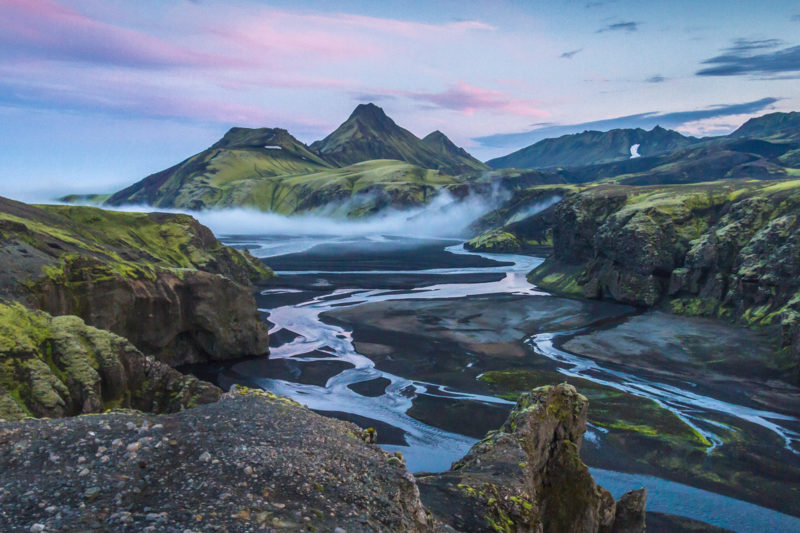Iceland is quickly becoming a popular touristic place to visit. All the natural wonders that this northern country holds have put the country on many visitor’s bucket list. Because the country is situated so far up north, close to the Arctic Circle, the Iceland weather isn’t always predictable or favorable to sightseeing. That’s why, before you visit the country, you should look into what the best time to visit Iceland is. Only then can you enjoy your vacation to the fullest!
This guide to Iceland will help you plan out your trip. We will go over what each season is like in the country founded by Vikings, what events are held each month, and what natural wonders you can’t miss. After you’re caught up on all this, it’s time to enjoy your Iceland holiday!
When Is the Best Time to Visit Iceland?
Iceland is one of the prettiest and richest countries in the world. It has so many natural wonders to dazzle visitors! It’s impossible for you to get bored or underwhelmed when you visit this northern country. Every season, there is something special that attracts tourists from all over the world. No matter what kind of vacation you’re looking for, you will find it right here in Iceland.
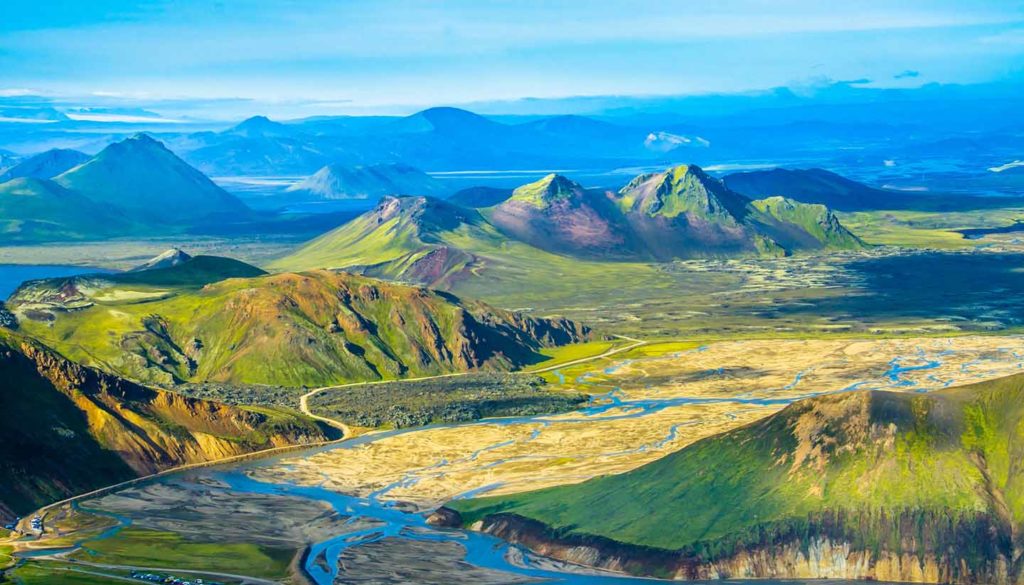
There are dozens of things to do and see year-round. Only you can decide when the best time to visit Iceland is: it all depends on what you want to do while visiting Iceland. For example, winter is the best time to see the Aurora Borealis and frozen waterfalls. The fall is the best time to go whale watching and to visit Iceland on a budget. The summer is when you can bask in the sun for almost twenty-four hours and when you can go glacier hiking. Finally, the spring is when all the snow and ice melt, temperatures rise again, and Iceland wakes up from a long wintery sleep.
Because the country is so close to the Arctic circle, there is a huge difference between seasons. If in other parts of the world the seasons blend together, here they couldn’t be easier to tell apart. The summer months are when all the ice and snow have melted, and sunny days are not uncommon. This is also the time when days get long — very, very long, in fact. It feels like the sun never sets! The winter months, on the other hand, are extremely harsh. Temperatures drop to below freezing, winter storms and blizzards happen frequently, and getting around by car is next to impossible. But the colder months are also when the Northern Lights shine the brightest.
But don’t be fooled by the seemingly bad Iceland weather! There are perks to visiting Iceland in the winter, too. As we said, it all depends on you. Keep reading to find out how the weather is, know what to pack, and what events to look out for in each season.
Summer in Iceland (June, July, August)
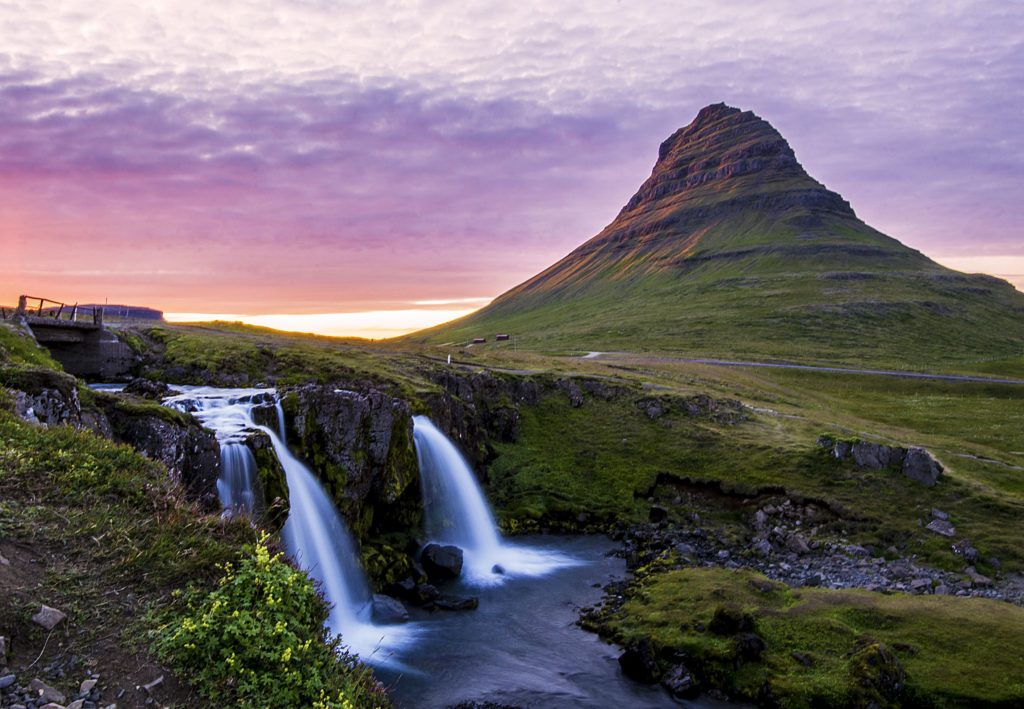
Many people will tell you that summer is the best time of year to visit Iceland. And they’re not wrong! If you want to stay away from the cold and avoid snow, then traveling during the summer months is a great idea. There are so many things to do during the warmest season that you won’t be bored during your holiday in Iceland.
During June, July, and August, Iceland is sunny for most of the day. Because the country is so close to the Arctic Circle, the summers are very bright. The longest day of the year happens on June 21st, the summer solstice. On that day, the sun sets at midnight and rises shortly thereafter, at three in the morning. This is known as the midnight sun, since sunset only happens around that hour. In total, the longest day of the year in Iceland has a whopping twenty-one hours of daylight!
The summer months also register the highest temperatures of the year. In the capital city, Reykjavik, thermometers usually hover at a pleasant 60 degrees Fahrenheit (or 15 degrees Celsius). While this is far from a warm summer, keep in mind that the country faces very harsh winters. So, it’s not surprising to see locals wear summery clothes and hit the black sand beaches even when a chilly breeze is blowing!
Visiting Iceland in the Summer
The summer is the best season to tour Iceland, as most travel guides will point out to you. The roads are in perfect condition, so a road trip is a brilliant idea. The Golden Circle is a popular road that starts in Reykjavik and goes through the southern uplands of the country. Since most tourist attractions are located right off that road, it is the perfect way to see all the natural wonders that Iceland has to offer. You can start your trip early in the morning and be back in the capital before sunset! Plus, driving in Iceland is just like driving in any other European country, except that there are a lot less drivers on the road and less traffic overall!
If you’re an animal lover, then you’re in luck. The summer months are the best time for whale watching. Orcas, blue whales, and humpback whales flock to Iceland to feed in the cold waters of the Arctic and North Atlantic Oceans. There are day trips leaving from Reykjavik and from small towns in the North, such as Húsavík. The boats that go out to the Skjálfandi and Eyjafjörður bays offer every small group of visitors the most isolated and scenic trips. Besides spotting almost twenty species of whales, you will also find white-beaked dolphins, seals, sharks, and harbor porpoises. Don’t forget to take your camera with you!
Iceland is also famous for being one of the best places for bird-watching (and, in particular, puffin watching) in the world. Every summer, thousands and thousands of seabirds and waterfowl fly a long distance to create their nests in Iceland. From late-April to August, there are dozens of tours to the Reykjanes Peninsula, the Snæfellsnes Peninsula, and the Westman Islands. There, you will find thousands of different bird species, such as the Guillemot, the Razordill, as well as the adorable-looking Atlantic Puffin!
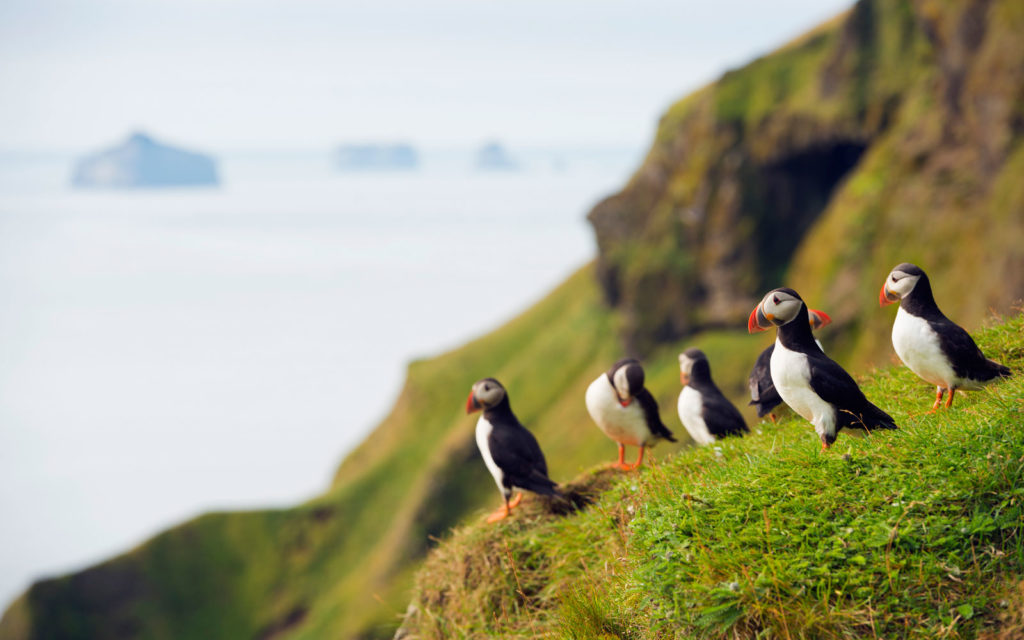
Glacier hiking is also a very popular activity. You will have to embrace the cold when you head up to the highlands, where glaciers never melt, but it will definitely be worth it! Iceland has the largest ice caps in Europe, and, in the summertime, they make for a great hiking adventure. You can join one of the many day tours that leave from Reykjavik every day or venture out on your own. Just imagine treading across a vast field of ice! If you want, you can also go on an ice cave hike. These tours put you right inside the giant glaciers, giving you a view you won’t ever forget.
Even if you’re not looking to get up close and personal with these icy giants, the summer months are still the best time to visit Iceland for hiking. There are hundreds of hiking trails for all kinds of people that are perfect for a small group. Even the low-intensity routes that take you on a tour of some of the country’s natural wonders are memorable. Depending on which hike you choose to go, you will see different things. You may spot waterfalls (we’re highlighting the Skógafoss and the Seljalandsfoss waterfall), black sand beaches, quaint little towns and much more. What they all have in common is that they’re a great chance to cross things off your bucket list!
Lastly, the summer is also a perfect time to enjoy the famous natural hot springs. The country is bursting at the seams with them, and travelers have taken notice. While they will inevitably be a little crowded, it’s still a great idea to check them out. Definitely don’t forget to pack a swimsuit, beach trunks, or a bikini. Most hot springs offer travelers amazing views as they relax in the warm water… The most famous one is, undoubtedly, the Blue Lagoon. As soon as you see it, you’ll know exactly why that is.
Fall in Iceland (September, October, November)
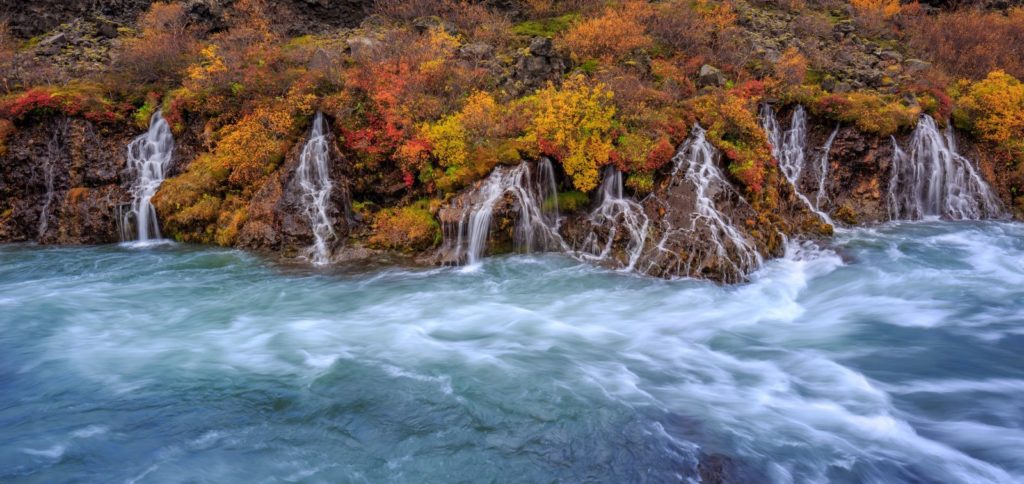
As September arrives, most tourists go back home, making fall the shoulder season. The sun is still high in the sky for a considerable number of hours, but the days do start to get shorter and shorter. The temperatures start to lower as the winter approaches, but the weather is still mild during September and October.
Since there aren’t as many people visiting Iceland during the fall months, the prices drop significantly in comparison to the high season. If you plan a trip for September and October, you will find plenty of affordable accommodation and some discounted airline tickets. The fall months are the best time to see Iceland on a budget.
Visiting Iceland in the Fall
During September and October, the country is still painted in the most vibrant and beautiful colors you can imagine. The fields and national parks are covered in beautiful red, orange, and yellow hues from the wildflowers that sprout everywhere. Now that the humidity goes up and temperatures go down, green moss starts to cover lava fields and the sides of mountains. It’s the perfect postcard-ready landscape you can ever find.
Besides this being a great time to travel on a budget, you’ll also successfully dodge the crowds and have some of the most infamous natural wonders the country has to offer all for you. The Blue Lagoon, the most visited hot spring in Iceland, is not nearly as crowded around this time of year as it is in the summer. Slip into the warm geothermally heated waters of the lagoon and take in the view — all without having to overhear other people’s conversations.
Since most roads are still pretty good and the main ones are still open, road trips are still a good way to tour the country. The ring road that goes around the country and the Golden Circle are both popular choices. They’re well-kept, pass through a lot of interesting sightseeing destinations, and are easy to drive in, even during the fall.
Animal lovers will also love the fall months in Iceland. While you will see the most whales swimming by the coast of Iceland in the summer, a few can still be spotted until late September. Orcas, humpback whales and other 21 species can be spotted as they travel to their feeding grounds in the northern part of the Atlantic Ocean. There are boat day tours leaving from several cities and towns daily, so don’t forget to sign up for one if you want to see these beautiful animals up close. As always, don’t forget to bring your camera!
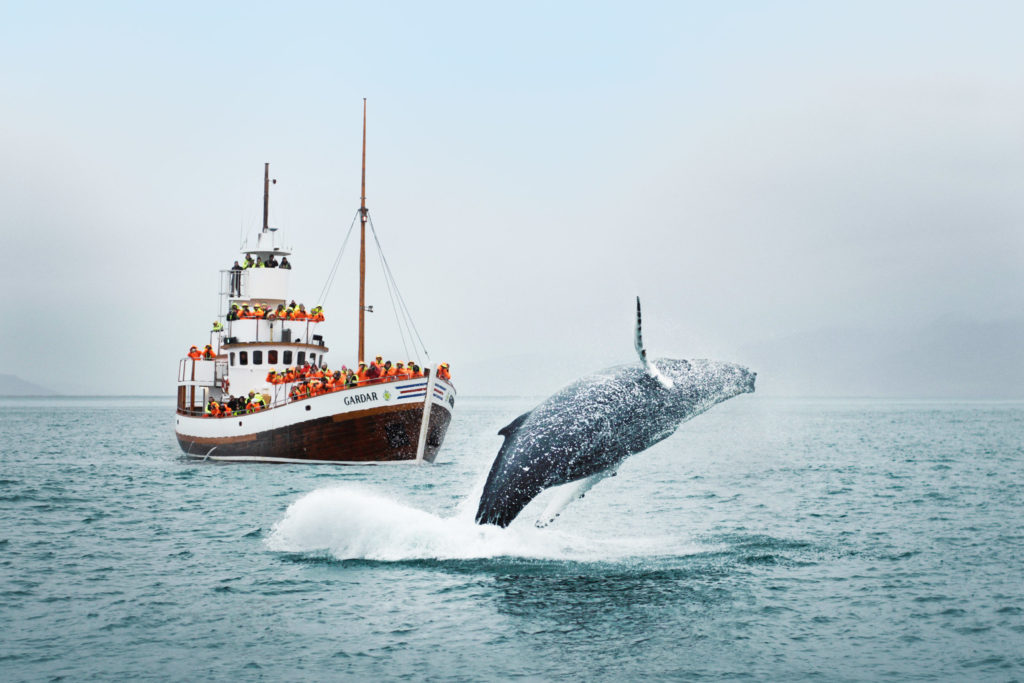
If you want to see the Northern Lights, then the fall months won’t let you down. Very late at night or really early in the morning is when they’re the most visible. As long as there is a clear sky, the Aurora Borealis should make an appearance! You’re more likely to cross this spectacular phenomenon off your bucket list in October and November. For many travelers, this is the number one reason why they choose to travel during this time of year!
Another cool thing to keep in mind if you’re traveling to Iceland during the fall is the Iceland Airwaves Festival. For three days in mid-October, indie and alternative music is celebrated in Reykjavik. Every year, big names such as Bjork and Of Monsters and Men, along with international DJs, brings large crowds to the capital. If you’re a music fan, make sure to not miss this event. Rolling Stone magazine even called it the “hippest long weekend on the annual music festival calendar.”
Lastly, the fall months are a great time to embark on a horse riding tour. Several companies set up year-round trips with Icelandic horses for a small group of visitors, but the fall months are the best time for them. The Iceland weather is still nice, the country is painted in beautiful colors, and the waterfalls and rivers are not yet frozen. Horseback riding is, ultimately, a great way to explore long beautiful paths you might not trek otherwise!
Winter in Iceland (December, January, February)
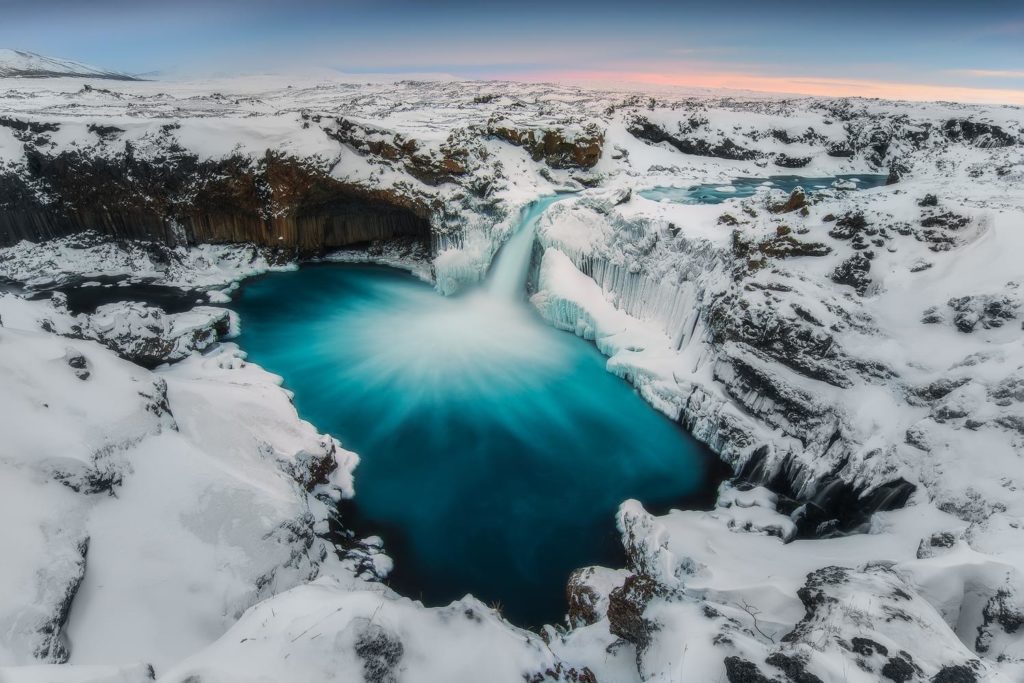
The first thing people think about Iceland is that it becomes a wasteland in the winter. So, it’s only obvious to think that there are no reasons to visit Iceland in the winter, right? Well… That’s not exactly true. While the Iceland weather isn’t the best, there are certain perks that draw crowds to the country every year.
One thing most people get right about the Icelandic winters is that they’re dark. Really dark. Because the country is so close to the Arctic Circle, it doesn’t get many hours of daylight during the winter months. In December the sun only shines for an average of five hours or less per day. But as you’ll soon see, this doesn’t necessarily make nighttime boring at all…
As most travel guides will tell you, the country in the winter experiences some pretty bad Iceland weather. While the average temperatures don’t drop much below freezing in Reykjavik, the wind chills can freeze anyone almost instantly. The northern part of the country, as well as the highlands, are the coldest during December, January, and February. Being outside isn’t a good idea during the winter. Not only will the Arctic winds freeze you in place, but the blizzards and intense snowfalls will stop you from enjoying your time outdoors.
Visiting Iceland in the Winter
Since a lot of the roads in the country shut down for the winter, you should get busy indoors. Forget about going to one of the many hot springs unless there is no wind outside — you might end up regretting it once you get a cold. You can also forget about glacier hiking unless you’re a professional and have suitable gear and a guide with you. So what can you do in Iceland?
The most obvious thing to do is to watch the Northern Lights. The winter months are the best to watch the Aurora Borealis illuminate the sky. As long as the sky is clear, you can take out your camera and snap pictures of this memorable sight. It is truly a beautiful phenomenon that most people have on their bucket lists, waiting for the opportunity to catch it. All in all, winter is the best time to visit Iceland for Northern Lights enthusiasts.
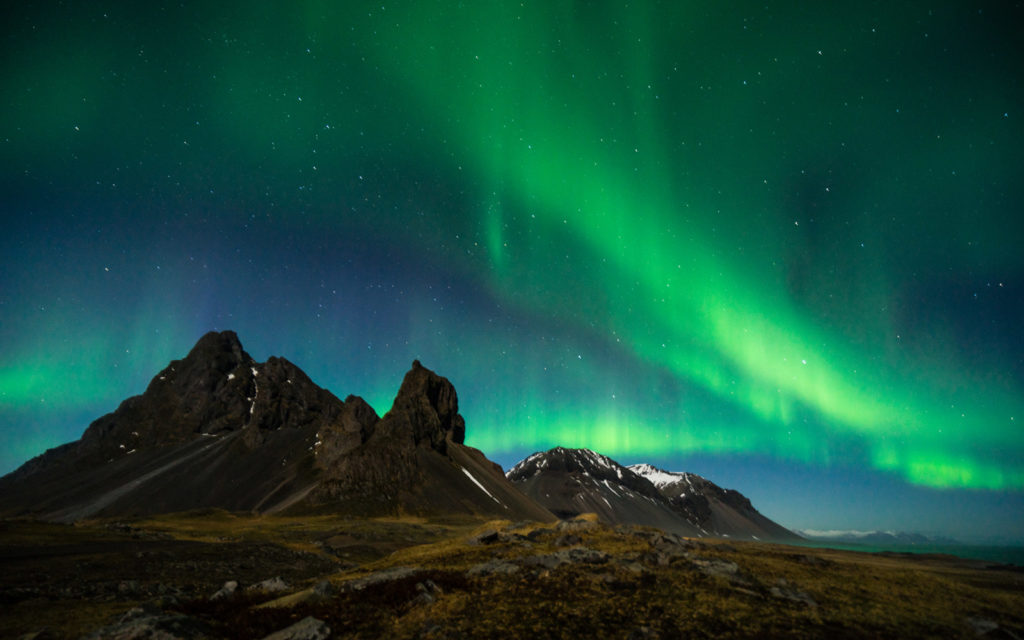
Another thing to do this time of year is to visit Reykjavik and other towns around the holiday period. While the sun doesn’t shine for long during the day, you can trust Christmas lights to give a new spark to the streets. This is a big holiday in the country, as you can see by how seriously people take their decorations and lights! It all certainly gives Icelandic towns charm.
Another popular holiday in Iceland is New Year’s Eve. This is the only time of year when people can launch fireworks legally, and so everyone takes an advantage of this! People go to great lengths to make sure their private firework show is unique, and so you’ll see the sky bright as you enter the new year. Another tradition in Iceland during New Year’s is the setting up of neighborhood bonfires. It symbolizes the end of all the worries and troubles of the old year and welcomes the new one with open arms and a clean slate!
Lastly, if you like to party, you should definitely check out the clubbing scene in Reykjavik. Just because it’s freezing outside doesn’t mean you can’t have fun inside, right? That’s the country’s unspoken policy, it would seem. Iceland is well known for its clubbing and partying scene, and in big cities you can see just how serious people are about dancing, music, and drinking. Unlike what happens in other European cities, people only hit the clubs well after midnight. Don’t get worried you’ve been lied to if you don’t see people lining up at eleven — pre-gaming is a popular way of getting a buzz without spending too much money at the bars, as drinks don’t come cheap.
Spring in Iceland (March, April, May)
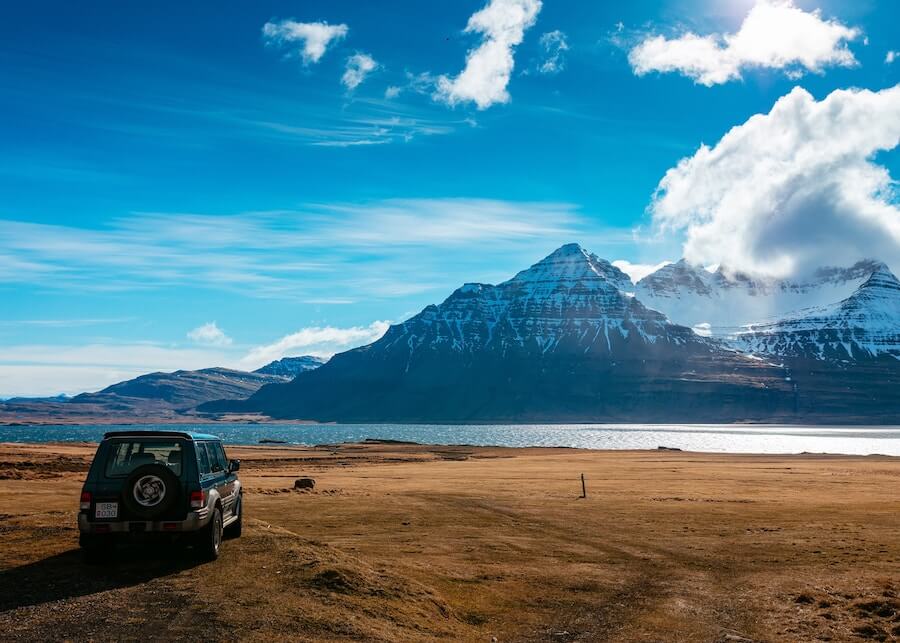
Spring is another shoulder season in Iceland. During these months, the country starts to wake up from its long winter sleep and blossom. However, unlike what happens in a lot of European travel destinations, this is not the best season to see the country.
The average temperatures during the spring are not that pleasant. It feels more like a milder continuation of winter than a prelude to summer. You would still need to pack very warm clothes and raincoats since these months are particularly wet thanks to dozens of rainy days every month. This gives way to a lot of mud, which also causes some roads to shut down.
Since all the ice is only now melting, you can’t expect to see bright or vivid colors across the fields. If Iceland had to be described as just one color, during the Spring that would be brown. If you’re looking for stunning colorful fields to take pictures of, you won’t find that here March through May…
Visiting Iceland in the Spring
Traveling to Iceland in the Spring does have its perks, though. For starters, since it’s a shoulder season, prices are very reasonable. You can find plane tickets for less than one hundred dollars even if you’re traveling from America. Accommodation, too, shouldn’t be hard to find. There are discounts during the spring months that make visiting Iceland great for people on a budget!
As there aren’t a lot of tourists around, visiting the often-crowded Blue Lagoon is a great idea. This is an amazing time to ditch crowds and enjoy the solitude, warmth, and spectacular views this natural hot spring offers all visitors.
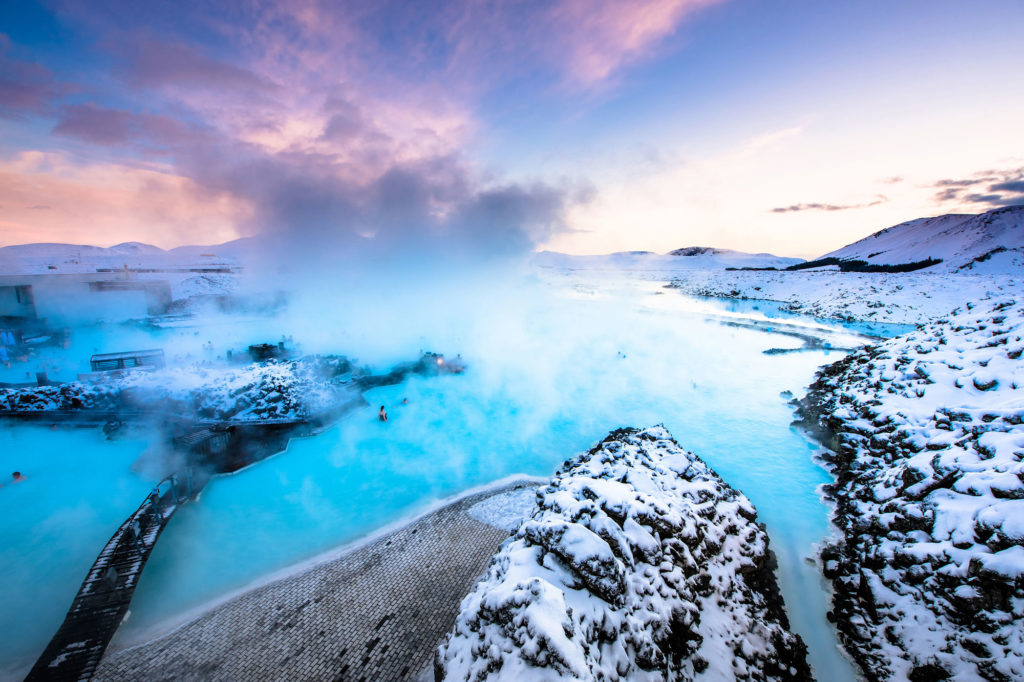
Spring is also a great time for photographers to visit the island. Longer days also mean more chances of capturing the country’s natural wonders on film with perfect lighting. While you won’t find brightly colored fields, the sharply cut mountains, bright-blue river streams, and imposing glaciers make up for all of it.
Frequently Asked Questions About the Best Time to Visit Iceland
When are accommodation and plane tickets cheapest?
The low season awards adventurous travelers with cheap accommodation and air transportation. You’ll find that the prices for touristy things drop from December to February. The shoulder seasons (fall and spring) also mean affordable prices. If you’re on a budget, March through May and September through November might be months to consider.
Are winters harsh in Iceland?
Very much so! Blizzards, wind chills, snow storms, and icy roads are common during the winter months. While the average temperatures are usually comparable to those of New York or Chicago during the winter, the “real feel” is much, much lower… The sun is also rarely spotted for longer than six hours at a time each day. All this combined make for a harsh and unforgiving winter.
What are the best months for sightseeing tours?
The summer months and autumn are the best time to go on sightseeing tours. This is because June through November the temperatures are mild, there isn’t a lot of rain to bog you down, and the hiking paths and roads are still in good conditions and open.
When are the Northern Lights most visible?
If you’re coming for the Northern Lights, you won’t be disappointed. It truly is a phenomenon just as beautiful as it is often described. The winter months of December, January and February are undoubtedly when they shine the brightest. The clear skies, cold temperatures, and complete darkness characteristic of Icelandic winters make the whole show even more beautiful.
When is the Iceland weather best for hikes?
The summer months are the warmest, and therefore the best for hikes. As a lot of hikes happen on mountains, you definitely don’t want to go up when it’s cold outside. If you want to go on organized treks with a small group of visitors, June through September are the ideal months for it.
What are some popular road trips in Iceland?
Thanks to tourism being on the rise, Iceland has built roads thinking of tourists. The 1,300-kilometer-long ring road and the infamous Golden Circle are notorious roads that pass through popular sightseeing spots. But some other routes that are just as beautiful but not talked about enough are the South coast tour, the North coast tour, and the West Iceland and West fjords tour.
